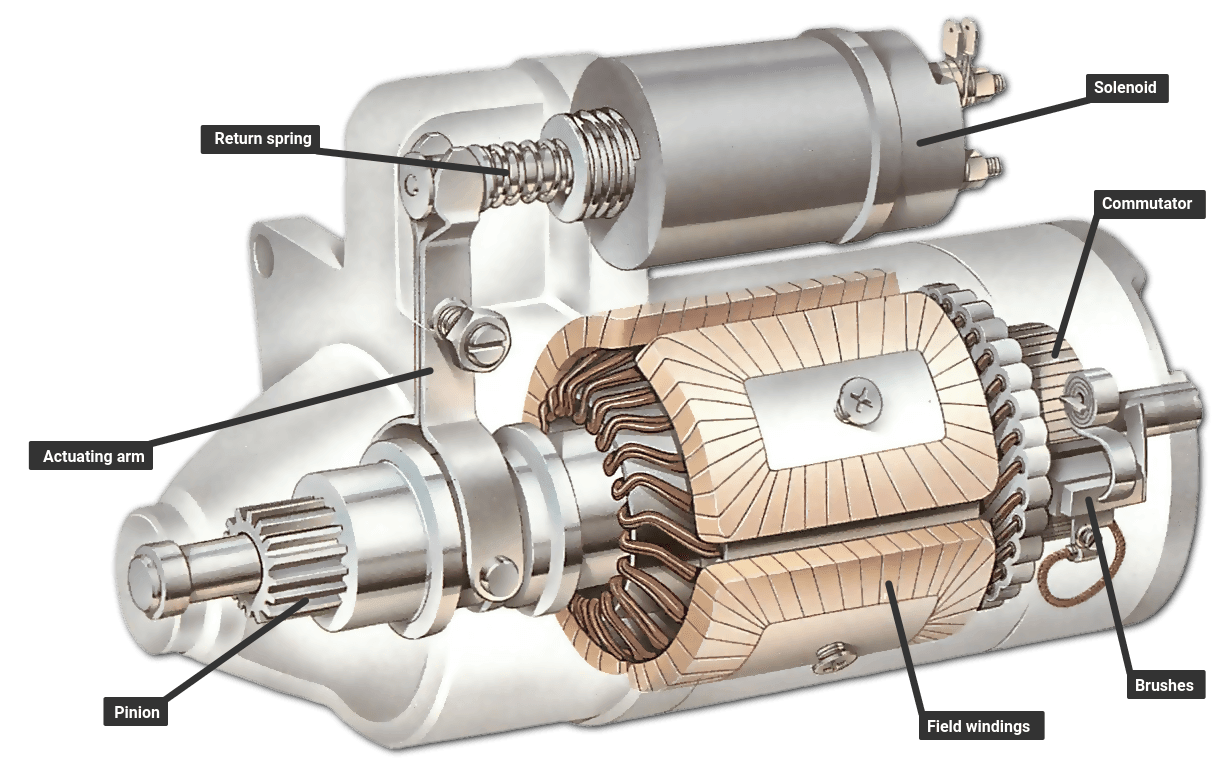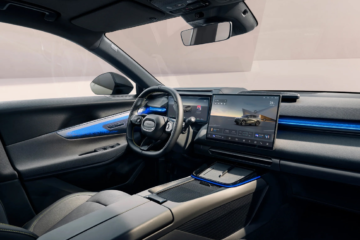You may have stopped at one time to wonder what happened right after the ignition key was turned on in your car. One of the major parts is something referred to as a starter motor, which is a small but not-so-shy component that does all the heavy lifting in getting your engine started. In this article, we take a look under the hood and explore how starter motors work. We’re going to point out what they really do and why they are important. Buckle up, and let’s get moving! Learn more
What is a Starter Motor?
Well, the starter motor is that electrical motor that gets this engine to fire. Consider this as a spark that is required to light up this fire. Without it, your car would never move, no matter the litres of fuel it may contain in the fuel tank.
How Does a Starter Motor Work
Turning of the Key Getting Things Started
When one turns the ignition key or presses the start button, an electrical signal is sent from the battery to the starter motor. It is the first in a line of many dominos that fall in order to fire up your engine.
Engaging the Flywheel The Gear Connection
Now, on the end of the starter motor is a small gear—called a pinion—which fits into another larger gear at the end of the engine called the flywheel. Think in terms of a little cogwheel that fits neatly into a larger cogwheel. That joining is important to the action of the next stage.
Spinning the Engine Getting Things Moving
When the gears engage, it is caused by the flywheel spinning caused by the starter motor. In doing this, the action cranks the engine up to a speed at which it can run by itself. It’s much like making that initial push on a merry-go-round to get it to spin on its own.
Disengage Allow the Engine to Take Over
As soon as the engine starts running, the starter motor disengages from the flywheel. The purpose of this is to prevent any damage to the starter and the engine. It’s just like when you push your kid on a swing, and once they are moving, you pull back because the energy from that one push has sent them flying – no longer needing your push.
Components of a Starter Motor
The key to understanding a starter motor is to know its major components, which include
The Armature
The armature is that part of the motor which rotates. It is enveloped by the windings of wire through which the electric current flows and creates a magnetic field. It is this magnetic interaction that spins the armature.
The Solenoid
It’s like a switch for the whole thing. Whenever one turns the ignition key, it receives an electrical signal and puts forward the pinion gear, actually engaging with a flywheel. Think of it as the butler of the starter motor, opening doorways for the engine to start.
The Brushes and Commutator
These components allow constant electricity to flow to the armature and ultimately keep the motor spinning. The brushes act like contacts, as in a light switch, and the commutator ensures that the direction of the current is maintained properly.
Diagnosing Common Problems with Your Starter Motor
Clicking Noise-Solenoid Fault
If you hear a clicking sound when you turn the key to start the car, then something must be faulty about the solenoid. It is an indication that the solenoid is trying to engage, but there is not enough power reaching the starter motor.
Grinding Noise Gear Problems
A grinding noise mostly means that there is a problem with the pinion gear and the flywheel. This will be because the teeth are worn out on these gears, thereby causing a smooth engagement between them not to take place.
No Sound Electrical Problems
If there don’t seem to be any sounds at all, the problem is most likely electrical. It could be anything from the battery, the wiring, or even the starter motor itself. Check the connections; make sure the battery is charged.
Maintenance Tips for the Starter Motor
Regular Checks on the Battery
A good battery is indispensable to the starter motor. Make sure your battery is checked regularly to keep it in prime condition and minimize starting problems.
Clean Connections
Resistance to electricity flow may result from corrosions or loose connections. Hence, it’s always good to clean and tighten the connections properly for effective operation.
Don’t Ignore Strange Noises
The most common ways that problems related to a starter motor arise are in terms of abnormal noises. Always fix such noise fast before it turns into a more complicated situation.
What You Didn’t Know About Starter Motors
A starter motor is an essential part of your car. It’s what gets your motor running, literally. It is what turns your engine on when you turn the key. A starter motor is engaged, which will spin your flywheel and start an action inside your engine. With a properly functioning starter motor, the car will run on its own. Keep an eye on it. Listen for the strange sounds. Regular checks shall help in avoiding problems. A well-maintained starter motor ensures that the engine will start smoothly.
Starter Motors in E nutshell
First off, there are the starter motors. These babies turn the motor over to start your engine. You turn the key, and the motor begins to wage in a circular motion, gets that flywheel to spin, and your motor is on. With one, you are going anywhere. Clicks or grinding noises, check the battery and the connections; do some regular maintenance, and your starter motor will keep chugging along. Have smooth starts every time.
Conclusion
Knowing how a starter motor works gives you insight into one of the most important components of your car. Every time one starts a vehicle, this little but strong motor manifests. It is, in other words, the unseen hero. You can have best car starter motors from https://unitechmotor.com/. Proper maintenance and being able to identify early symptoms of possible problems will ensure a smooth and reliable start every time for your cars.
Stay in touch wirth us for more updates and alerts! Gossips.Blog




